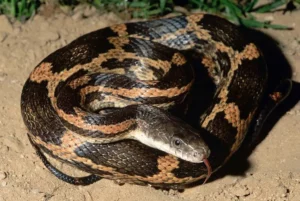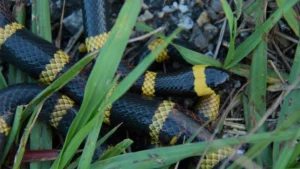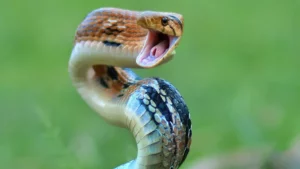
Snakes are among the most fascinating creatures on Earth, captivating both seasoned wildlife enthusiasts and curious beginners alike. Often associa....
When it comes to snakes, the sheer diversity of species is truly mesmerizing. From the vibrant colors of the Amazon rainforest to the arid regions of the Sahara Desert, snakes have successfully adapted to a wide range of environments. Understanding the various types of snakes can help us appreciate the intricate web of life they contribute to.
Snakes, with their slithering bodies and flickering tongues, have fascinated humans for centuries. These remarkable creatures have evolved over millions of years to become some of the most successful predators on the planet. With their unique adaptations and behaviors, they have managed to thrive in almost every corner of the globe.
In Dallas-Fort Worth, you can encounter several snake species, each with its unique characteristics. From the venomous rattlesnakes, such as the Western Diamondback and the Timber Rattlesnake, to the harmless Rat Snake and Garter Snake, these reptiles play crucial roles in maintaining the delicate balance of the ecosystem.
The Western Diamondback rattlesnake, known for its distinctive diamond-shaped patterns on its back, is a formidable predator. With its venomous bite, it can immobilize its prey within seconds. The Timber Rattlesnake, on the other hand, relies on its rattling tail to warn potential threats, giving them a chance to retreat before it strikes.
On the non-venomous side, the Rat Snake is a common sight in the Dallas-Fort Worth area. These snakes are excellent climbers and can often be found in trees, hunting for birds and small mammals. The Garter Snake, with its vibrant stripes, is known for its ability to thrive in various habitats, from grasslands to wetlands.

Learning to identify different snake species can enhance your understanding of these creatures and help you navigate their habitats more safely. By recognizing the warning signs of venomous snakes and understanding their behaviors, you can coexist with these fascinating creatures without putting yourself at risk.
Snakes have long captivated scientists and researchers with their mysterious behavior patterns. From their hunting techniques to their highly specialized senses, there is still much to learn about these enigmatic creatures.
One intriguing aspect of snake behavior is their ability to swallow prey much larger than their own heads. Snakes have a unique jaw structure that allows them to dislocate their lower jaws, enabling them to stretch their mouths wide open. This incredible adaptation allows them to consume prey that would otherwise seem impossible.
Another fascinating behavior is the shedding of their skin. Snakes periodically shed their old skin to make way for new growth. This process, known as molting, helps them get rid of parasites and allows for the growth of new scales. During this time, snakes may appear dull and less vibrant, but once they shed their old skin, they emerge with a fresh and vibrant appearance.
Snakes also have a remarkable ability to sense their surroundings. They rely on their forked tongues to collect scent particles from the air, which they then bring back to a specialized organ called the Jacobson's organ. This organ helps them analyze the scents and locate potential prey or predators.
As we continue to unravel the mysteries of snake behavior, we gain a deeper appreciation for these incredible creatures. Their unique adaptations and behaviors have allowed them to survive and thrive in a world full of challenges and competition.
While snakes are fascinating creatures, it is essential to recognize the potential risks associated with encounters. In Dallas-Fort Worth, some snake species can pose a threat to humans. Understanding their behavior, characteristics, and how to respond in case of an encounter is crucial for personal safety.
Snakes are cold-blooded reptiles that play a vital role in ecosystems. They come in various sizes, colors, and patterns, making them intriguing to observe. However, it is important to remember that not all snakes are harmless. Some species are venomous and can cause serious harm if provoked or bitten.
Awareness is key when it comes to venomous snakes. Being able to identify venomous species and understand their distinguishing features is crucial for avoiding potential danger. In Dallas-Fort Worth, some venomous snakes to be aware of include the Copperhead, Cottonmouth, and Coral Snake.

The Copperhead snake, for example, is known for its distinctive hourglass-shaped markings on its body. Its coloration can vary from light brown to reddish-brown, allowing it to blend in with its surroundings. The Cottonmouth, also known as the Water Moccasin, has a dark brown or black body with a white mouth, which it displays as a warning sign when threatened. The Coral Snake, on the other hand, has vibrant red, yellow, and black bands along its body, serving as a warning of its potent venom.
Familiarize yourself with the distinctive patterns, coloration, and behaviors of these dangerous reptiles. This knowledge can help you differentiate between venomous and non-venomous snakes, allowing you to take appropriate precautions when encountering them.
Though snake bites are uncommon, it's crucial to be prepared. Knowing how to react in case of a snake bite can make a significant difference in the outcome. If you or someone around you is bitten by a snake, seek immediate medical assistance.
While waiting for professional help to arrive, it is important to remember a few key steps. First, try to stay calm and keep the affected area as still as possible. This can help slow down the spread of venom throughout the body. Avoid applying a tourniquet or attempting to suck out the venom, as these methods can often do more harm than good.
It is also important to remove any tight clothing or jewelry near the bite site, as swelling may occur. Keep the bitten limb at or below heart level to minimize the venom's circulation. If possible, take note of the snake's appearance to help medical professionals determine the appropriate antivenom.
Snake bites can vary in severity depending on the species and the amount of venom injected. Medical professionals will assess the situation and provide the necessary treatment, which may include antivenom administration, wound cleaning, and pain management.
Remember, prevention is always better than cure when it comes to snake encounters. Stay vigilant, educate yourself about local snake species, and take necessary precautions when venturing into snake habitats. By understanding the potential dangers and knowing how to respond, you can enjoy the wonders of snakes while prioritizing your safety.

Discovering a snake infestation in your home can be alarming. Understanding the signs of a snake problem and knowing when to seek professional he....
Snakes are elusive creatures, and spotting signs of their presence can be challenging. However, some indicators may suggest the presence of snak....
If you notice any of these signs, it is crucial to take immediate action to prevent the infestation from worsening.
While snakes play essential roles in the ecosystem, it's understandable that you may not want them in your living spaces. When faced with a snak....
Professional snake removal services have the expertise and experience to safely remove snakes from your property. They can also provide valuable guidance on preventing future infestations.
Snakes can be encountered in various habitats and environments, and knowing where they are commonly found can help you stay alert and minimize en....
Snakes can thrive in a wide range of habitats, including forests, grasslands, wetlands, and deserts. They occupy different ecological niches and....
In Dallas-Fort Worth, keep an eye out for snakes near bodies of water, such as rivers, lakes, and ponds. These areas often provide snakes with ....
It's not just natural habitats where you might encounter snakes. Urban areas can also attract these reptiles. Snakes may seek shelter in backyar....
By understanding these unexpected snake hotspots, you can take appropriate measures to minimize the chances of encountering them in urban environments.
Controlling snakes and preventing unwanted encounters require a combination of proactive measures and informed decision-making.
The internet is full of remedies and methods claiming to repel snakes naturally. However, it is crucial to approach these with skepticism. Many of these so-called snake repellents have little scientific evidence to support their claims.
Rather than relying on unproven remedies, focus on preventive measures and professional assistance when necessary.
If you wish to remove a snake from your property, trapping and relocating it can be an option. However, it is essential to exercise caution and fol....
When attempting to trap a snake:
On the other hand, avoid:
Preventing snakes from entering your property is an effective long-term strategy. By making your surroundings less attractive to snakes, you can ....
Your choice of landscaping can greatly influence the likelihood of snake encounters. By incorporating certain elements into your landscape, you c....
Consider the following tips:
An important note: Remember that snakes are valuable members of the ecosystem, and their presence contributes to a balanced natural environment. If not posing a direct threat, consider observing and appreciating these enchanting creatures from a safe distance.
By exploring and understanding the world of snakes, arming ourselves with knowledge and taking necessary precautions, we can coexist peacefully with these captivating reptiles, ensuring the safety of both humans and wildlife in the Dallas-Fort Worth area.